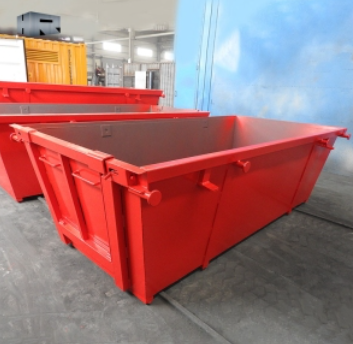
Choosing the right size skip bin for your home renovation project is important to ensure proper waste disposal and efficient work progress. The size of the skip bin you need will depend on various factors, such as the extent of your renovation, type of materials being discarded, and the duration of the project. Here are some guidelines to help you determine the appropriate skip bin size for your home renovation project:
1. Assess the scale of your renovation project:
Consider the size of your home renovation project. Are you doing a small bathroom makeover, or are you renovating your entire house? The scope of your project will determine the amount of waste generated and, consequently, the size of the skip bin you'll need.
2. Evaluate the types of materials being disposed of:
Different renovation projects create different types and quantities of waste. For example, if you are doing a kitchen renovation, you may have bulky items like cabinets and countertops to dispose of. Alternatively, a bathroom renovation may generate tiles, fixtures, and plumbing materials. Knowing the types of materials involved will help you estimate the volume of waste and choose an appropriate skip bin size.
3. Estimate the amount of waste generated:
Based on your assessment of the materials being disposed of, try to estimate the volume of waste that will be produced throughout the renovation project. This will give you an idea of how much space you'll need in a skip bin. It can be helpful to consult with renovation professionals or Waste Management companies who can provide guidance based on their experience.
4. Consider the duration of your project:
How long do you expect your renovation work to take? The longer your project, the more waste accumulates over time. Be mindful that skip bins have weight limits and increased durations may require more frequent waste removal or larger skip bins to accommodate the increasing waste volume.
5. Look into available skip bin sizes:
Skip bins come in various sizes, typically measured in cubic meters (m³). Common sizes range from 2m³ to 12m³, with intermediate sizes in between. Research local waste management providers to determine the sizes they offer and whether they meet your requirements.
6. Select an appropriate skip bin size:
Based on the previous considerations, determine the skip bin size that best suits your needs. It's better to choose a slightly larger skip bin than underestimating your waste volume. While renting a larger skip bin may involve additional costs, it ensures that you have sufficient space for all your waste materials, eliminating the need for extra pickups or inconvenient disposal methods.
7. Ensure compliance with regulations:
Before finalizing your decision, ensure that you are aware of any local regulations or permits required for skip bins in your area. Some municipalities may have specific rules regarding skip bin placement, permit requirements, and waste segregation. Understanding and complying with these regulations will help you avoid any potential penalties.
Remember to communicate regularly with your chosen waste management provider to accommodate any changes or updates to your project. By carefully assessing the scale, materials, and duration of your renovation, you can make an informed decision about the size of the skip bin needed, ensuring a smooth and efficient waste disposal process throughout your project.




Komen
(0)